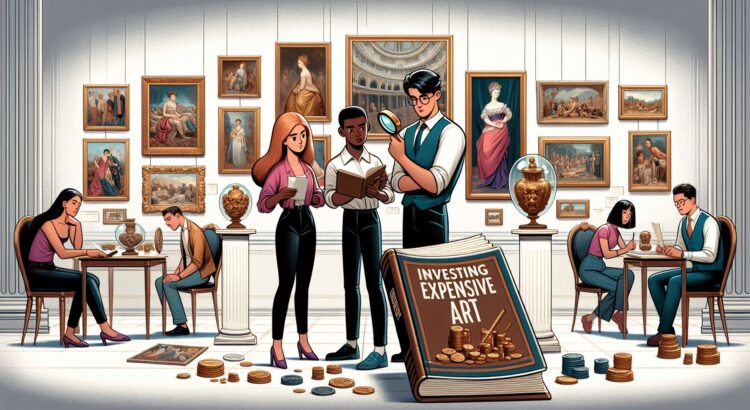As a young adult, the idea of investing in expensive art may seem intimidating. However, art has long been considered a valuable asset, not only for its aesthetic appeal but also for its potential to appreciate in value over time. In a world where traditional investments can be unpredictable, investing in art can be a way to diversify your portfolio and add a touch of beauty to your home.
When it comes to investing in art, it’s important to do your research and carefully consider your options. There are many factors to consider when purchasing expensive art, from the artist’s reputation to current market trends. Here are some tips for young adults looking to invest in high-end art:
First and foremost, familiarize yourself with the art market. This includes understanding the different art movements, genres, and artists that are currently trending. In Arizona, for example, you may find artwork inspired by the desert landscape and iconic cactus plants. By staying informed about the art world, you can make more informed decisions when it comes to purchasing expensive pieces.
Additionally, consider seeking guidance from art experts or consultants. These professionals can offer valuable insights into which artists and pieces are worth investing in. They can also help you navigate the intricacies of the art market and avoid potential pitfalls. Don’t be afraid to ask questions and seek advice from those with expertise in the field.
When purchasing expensive art, it’s important to buy pieces that you truly love and appreciate. Art can be a reflection of your personality and taste, so choose pieces that speak to you on a personal level. Whether you’re drawn to abstract paintings or realistic sculptures, invest in art that brings you joy and enhances your living space.
In terms of budgeting, consider setting aside a specific portion of your income for art investments. While expensive art can be a worthwhile investment, it’s crucial to be mindful of your overall financial goals and responsibilities. By creating a budget for art purchases, you can enjoy collecting pieces without sacrificing your long-term financial stability.
Finally, don’t be afraid to start small. You don’t need to purchase million-dollar paintings to begin building your art collection. Consider starting with more affordable pieces from emerging artists or local galleries. As you gain confidence and experience in the art market, you can gradually work your way up to investing in more expensive pieces.
In conclusion, investing in expensive art can be a rewarding and fulfilling endeavor for young adults. By educating yourself about the art market, seeking guidance from experts, and staying true to your personal tastes, you can build a collection of valuable and beautiful pieces. Remember to approach art investment with patience and a discerning eye, and you may find that your collection grows in value and significance over time. In the vibrant world of art, there’s always room to grow, just like the sprawling cacti in the Arizona desert.
